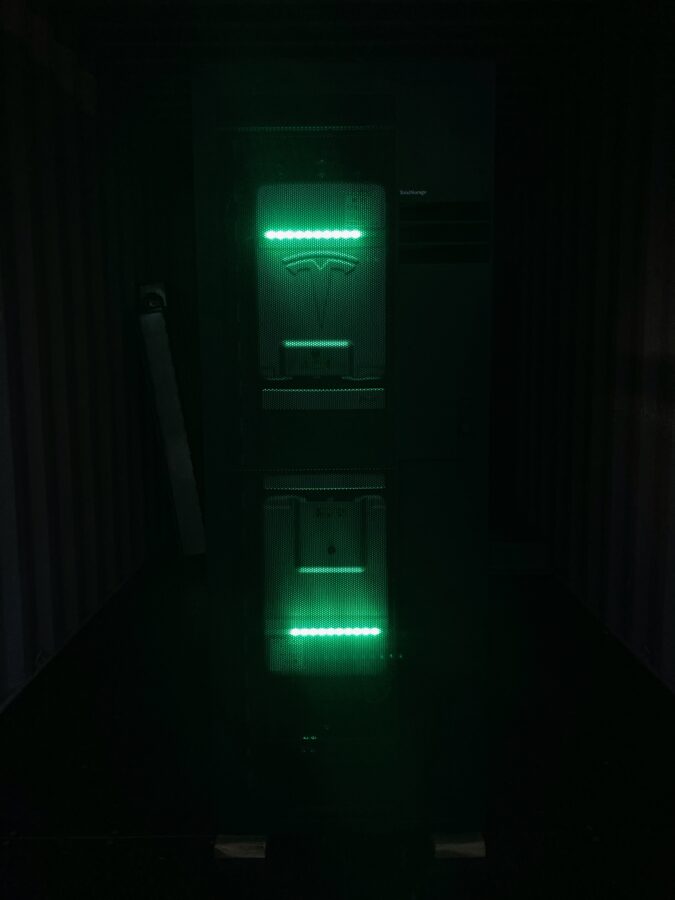
We proudly announce Catchpenny, our sustainable energy storage concept for the small business sector. With a 22kWh maximum capacity Catchpenny is the first Energy Storage Unit in the world built entirely from salvaged automotive parts. Catchpenny wants to provide a green, reliable and affordable electricity storage solution for business customers.
On-site storage provides many benefits to businesses with increasing electricity consumption. Catchpenny saves on the energy costs by cutting demand charges and reducing peak time consumption. It increases the reliability of the local network and provides backup power source. With local solar generation in place, it also maximises on-site consumption and further reduces your site’s energy costs.
Take the example of a car dealership with sizeable self-consumption, made up by the complementary EV charging facilities offered to customers and the operation of a car-wash. Catchpenny’s local storage can provide the necessary power to upgrade the shop’s EV charging facilities and still respect the site’s limited grid connection. Catchpenny can also store solar energy generated by the PV-system installed on-site, increase self-consumption or even trade with energy in an automated manner.
Small business operators may also use the Catchpenny storage to generate revenue, via spot markets and/or under auspices of a contract or power purchase agreement for energy, capacity, or ancillary services.
There is no point of solving one problem by creating another, or in e-mobility’s case: reduce carbon-emissions and create tonnes of toxic waste. With e-mobility’s spread, every year millions of batteries will be removed from EVs, as their capacity falls below the guaranteed threshold. Recycling these batteries is key for e-mobility’s sustainability.

Fortunately, such batteries are prime candidates for on-site energy storage units. At MET3R we wanted to push recycling to the limit and built Catchpenny entirely from salvaged parts. Recycled Mitsubishi Outlander PHEV battery packs provide its total total storage capacity of 22kWh. A pair of salvaged Tesla on-board chargers charge these batteries at up to 11kW. On the AC side, an in-built Fronius inverter provides a maximum output of 12kW. The entire setup is placed inside an IBM TotalStorage rack cabinet, which provides a safe and sturdy structure for the equipment.
In principle, all car batteries are fit for such re-purposing, yet each type has its own peculiarities. At MET3R we’ve successful experiments with batteries built in BMW, Tesla, Renault, Open, Nissan and Hyundai models, besides the Mitsubishi/Yuasa packs used in the current setup.
Operational safety was a prime concern while developing the storage unit. Catchpenny is designed and built to minimise the risk of electric shock-, lithium fire and overcurrent-related harms. Our design, with the right battery-positioning and the right choice of resistant materials contains lithium battery thermal runaways and protects other parts of the equipment against potential damage.
Also Catchpenny’s BMS monitors voltage and temperature per cell, tracks the condition of the chargers and the inverter and passes this information on to our remote monitoring team (via LAN or GSM). The entire system and individual components can be remotely started, stopped and inspected for faults.

We kept on using the original battery packs built-in safety systems, developed by the automotive industry, protecting each part of the equipment and safely shutting down the system in case an unwanted action occurs (e.g. someone opens the storage while in operation).
Catchpenny is monitored and controlled by ZenGrid, MET3R’s demand-side management software platform. ZenGrid manages DER assets in compliance with openADR standards and lets fleet and grid managers handle EV chargers, energy storage units or PV inverters in a highly automated manner, driven by custom demand-side management strategies. These strategies may reduce energy costs, increase green energy use or smooth out peak loads in respect of the site’s limited grid connection capacity.
Catchpenny not only brings immediate benefits to customers; its sustainable production and affordable price make it a cornerstone of future energy systems. The ensuing green energy revolution, driven by distributed renewable energy production and transport electrification requires flexible and reliable power grids. Catchpenny provides flexibility on the demand side and increases predictability of a site’s production and consumption from the grid operator’s point of view.
The birth of Catchpenny was supported by the generous offerings of our partners, for whom we are very grateful. Mitsubishi Motors Hungary offered the battery packs and Tiszta Energiák Ltd. provided the solar inverter. Last but not least, Catchpenny praises the creative engineering work of Péter Varsányi.